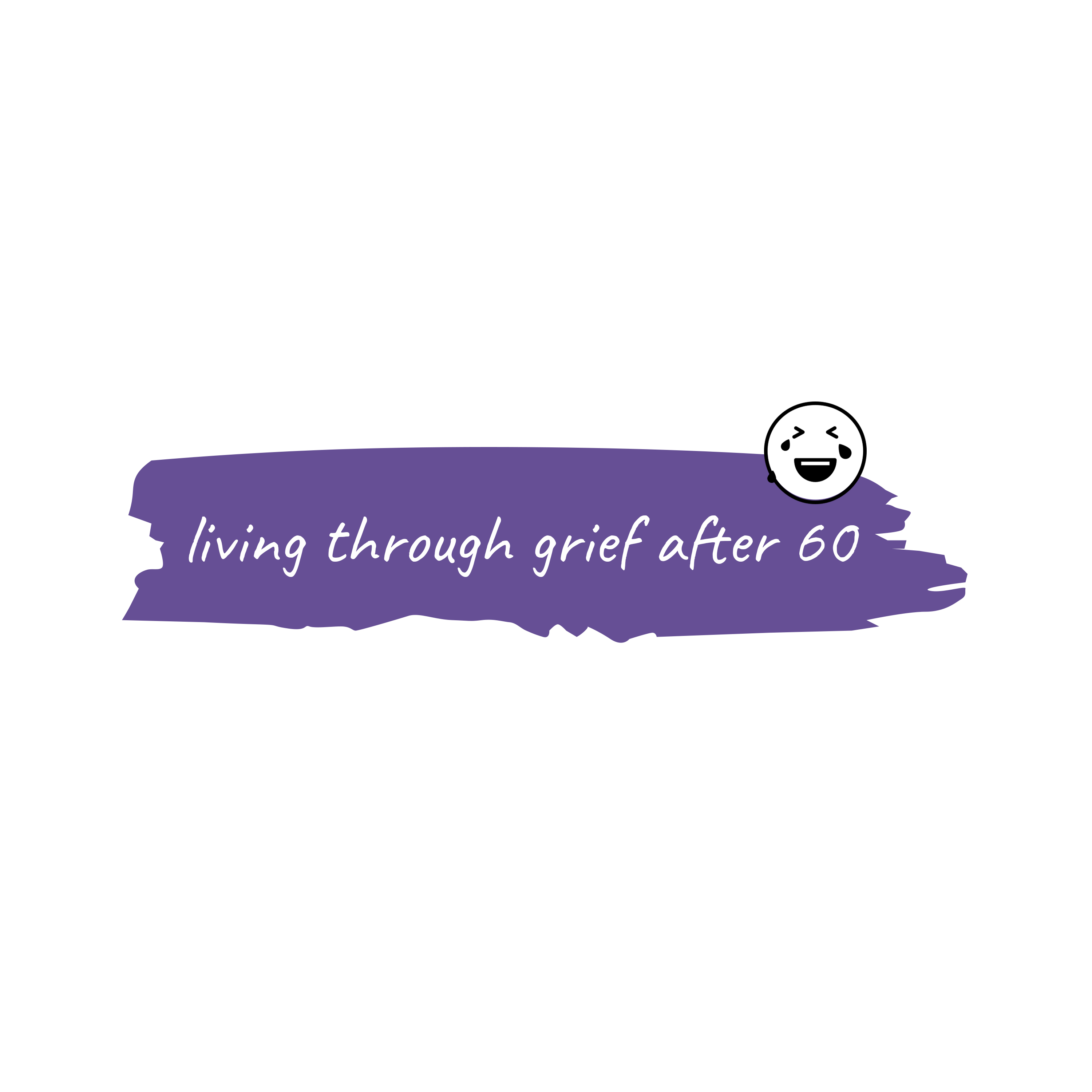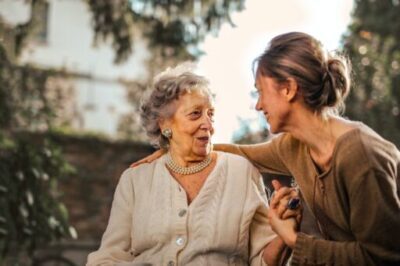Image via Pexels April Meyers of Mind Body Health Solutions wrote the following guest article. This article is reprinted with permission. As uncomfortable as it may be, discussing end-of-life arrangements with your loved ones is an essential conversation. It helps ensure that everyone’s wishes are respected when the time comes and can provide a sense of …
Anticipatory Grief
What to Do When Only One Parent Needs Nursing Home Care
Photo Credit: Pexels.com The following article is a guest article from Annabelle Harris. She is a blogger who uses elders.center as a platform to share helpful tips and advice for seniors. It is used with permission. Introduction Aging parents may need extra support in daily life, from help with errands like cooking and cleaning to …
Grieving a Death During A Pandemic
This post may contain affiliate links, and I may earn compensation when you click on the links at no additional cost to you. This is the second of a series of four articles on the Coronavirus and the unique grief it brings to everyone. The following article is a continuation of Statistics, the Coronavirus, and …
Review of “Choosing Joy: Alzheimer’s: A Book of Hope”
The following post is a sponsored post, and compensation has been received.
This post may contain affiliate links, and I may earn compensation when you click on the links at no additional cost to you.
Choosing Joy: Alzheimer’s: A Book of Hope is the personal story of the last six years of Adolph “Ady” Berger’s life. The author, his wife, Helene, lovingly tells the story of how Ady changed from saying “I don’t want to live anymore” upon learning of his condition just days before his 50th wedding anniversary to living his last years as happily as possible. Unlike other books about Alzheimer’s, it is very easy to read. The author talks honestly about realizing that Ady did not ask to be diagnosed with Alzheimer’s. With the help of family, friends, doctors and aides, she was able to help Ady realize he was still the man she loved despite his illness.
About The Author and Her Husband
Ady Berger was a building engineer for a home realty business who was planning on retiring when he was diagnosed with Alzheimer’s. He died in 2011 of unrelated causes following a dinner that was held to say “thank you” for their kindness and support. Helene has held a number of leadership positions, serving on a variety of boards both in the Miami area and nationally. They have two children and four grandchildren.
What Makes This Book Unique
The book begins with an introduction to Ady and Helene’s lives, including how they met and the joys and challenges of starting a family. Throughout the book, there are drawings and letters written by Ady after Helene encouraged him to try to help keep his mind active. The drawings and letters continued until the night he died. There are several pictures of Ady and Helene together, beginning with their wedding day through the last concert they attended together. There are several pictures of Ady throughout his life, from his teenage years to his last year. . The book also has detailed lists that Berger was very dependent upon to make sure Ady continued a routine. These included Ady’s prescriptions and his daily schedule.
The suggestions Berger presents here can be used based on the unique needs of each individual. It is never meant to be “one size fits all”, or “what worked for us will work for you, too”. What makes this book unique is that, as the author wrote, it is a book of hope and not a “a litany of graphic horrors” like similar books about Alzheimer’s.
What The Book Covers
The book is divided into four parts. Foundations reminds the reader that Alzheimer’s is not something anyone would choose for themselves. It is possible to create strategies that will help an Alzheimer’s patient find joy in their lives despite their changed medical condition. Practical Approaches focuses on the strategies used to helping Ady cope with the changes his condition brought. Berger pointed out that when an Alzheimer’s patient is treated with unconditional love, patience, kindness, and support, positive results occur.
Interactions with Others focuses on finding the right aides for an Alzheimer’s patient. Berger offers an outstanding suggestion to spouses to encourage doctors to ask the patient questions and listening to them. She also has a word of encouragement for caregivers who may feel guilty about wanting to take a break and live their own lives. Looking Back focuses on what Berger learned about herself following Ady’s death. She emphasizes that while the conditions for regeneration are not easy to obtain, it is still possible.
How Is This Book Different from Other Alzheimer’s Books
Berger noted that the Alzheimer’s Association states that “Alzheimer’s is the only cause of death in the top 10 in America that cannot be prevented, cured, or even slowed”. Unlike most books focusing on caring for a loved one with Alzheimer’s, it is truly a book of hope that you will never be the same for reading. Berger wrote this book with the love and tenderness she felt for the man she was married to for over 55 years; She realized that there is a difference between the medical symptoms of Alzheimer’s and the patient’s reactions to those symptoms. Berger made an effort never to show frustration, anger, or disappointment despite Ady’s behavioral changes.
It is a testament to Helene Berger’s loving and compassionate support of Ady that he never showed any type of violence to her the entire six years he was ill with Alzheimer’s. Violence is a characteristic of a patient’s reaction to the medical symptoms of Alzheimer’s.
Conclusion
Choosing Joy: Alzheimer’s: A Book of Love is recommended reading for anyone who wants to enjoy the final years of a loved one diagnosed with Alzheimer’s life. It is possible to create ways to help adjust to the changes that take place in your loved one’s personality. Caregivers are encouraged to care for their loved ones with tenderness, love and compassion.The reader is encouraged that they are a better caregiver, and spouse, when they take time for a break with friends and family. For anyone reading this book, you will be changed. No matter what stage of Alzheimer’s your loved one is in, a loving and caring relationship can continue.
To order a copy of Choosing Joy: Alzheimer’s: A Book of Hope, please click on the following link: Choosing Joy: Alzheimer’s: A Book of Hope
How Mindfulness Can Reduce Fear and Worry
The following post is a sponsored post, and compensation has been received. This post may contain affiliate links, and I may earn compensation when you click on the links at no additional cost to you. Who Is The Author? I recently had an opportunity to speak with Scott Symington, PhD, author of Freedom from Anxious …
Alzheimer’s – The Long Goodbye
Occasionally, after my mother asks the same question in about five minutes, she says that she must be getting Alzheimer’s. I remember seeing a cartoon strip several years ago when a youngster referred to “Old Timer’s Disease”, which seems to be a sad joke at the expense of seniors 60 and over who suffer the effects of Alzheimer’s disease that are devastating not just for the person diagnosed with it, but also everyone who loves them.
In my volunteer work at a hospice, some of the people I call as a grief support caller said that they were their loved one’s caregiver for several years before they eventually passed away. Survivors have shared while they were caring for their spouse, it became a large part of their identity, and felt they lost that part of themselves when their spouse eventually passed away. I have also heard survivors reflect that they felt a sense of relief when their loved one died because they knew their spouse was no longer suffering; the surviving loved one also shared that they chose to remember their spouse as they were before they were diagnosed with Alzheimer’s.
Kathleen Fifield for AARP in 2018 said that while dementia can include disorders characterized by chronic memory loss, Alzheimer’s disease, just one of the diseases that is characterized by personality changes and impaired reasoning, “slowly and irreversibly destroys memory and thinking skills”, eventually taking away the person’s ability to carry out even simple tasks. Sadly, Fifield continued, a cure for Alzheimer’s “remains elusive”. It must be emphasized that Alzheimer’s disease is the most common form of dementia, with an estimated 60% to 80% of cases, according to AARP’s Fifield.
Alzheimer’s disease affects people from all walks of life. Former Wisconsin Governor Martin Schreiber wrote My Two Elaines: Learning, Coping, and Surviving as an Alzheimer’s Caregiver, in which he tells about the transition of his wife Elaine, who he met while they were in high school; had gradually changed from a woman who graciously entertained guests while First Lady of Wisconsin to a woman who no longer knows her husband. It is recommended reading for anyone who is a caregiver of an Alzheimer’s patient who is also experiencing anticipatory loss of their loved one while he/she is still alive physically.
When former President Reagan was diagnosed with Alzheimer’s in 1994, Eleanor Clift and Evan Thomas said in Newsweek in 2016 that he was most concerned about his wife Nancy and his family, who were about to bear a difficult burden to carry. Clift and Thomas continued that Nancy knew her husband was going to gradually leave her and would eventually be unsure as to who she was with each passing day, drifting away from her. Nancy, according to Clift andThomas, felt that the effects of Alzheimer’s disease would be worse on her than her husband’s attempted assissination.
While I don’t have personal experience with someone in our family with Alzheimer’s, I can emphasize with the pain of being asked directly by the patient, “Who are you?” It also can be painful to find out from relatives who visited the patient later that the patient asked, “Who was he/she?” It can be extremely difficult to care for someone with Alzheime’s disease who is irritated simply because they don’t know someone they loved for years. It is difficult, if not impossible, to share or reminisce about things that happened years ago, knowing that a loved one will be agitated with their loved one simply the person has become someone they don’t know, despite spending decades together. It can be troubling to know that one’s last moments with their loved ones,no matter how long between initial diagnosis and eventual death, may be remembered as a time of confusion and agitation because of the effects of Alzheimer’s that cause them to not remember the loved one.
While Alzheimer’s can be one of the most difficult things seniors 60 and older can go through with their loved ones, it can also be one of the most grace-filled moments of the lives of both parent/child and husband/wife. Despite the ravaging effects of Alzheimer’s that can result in sadness that the person diagnosed with Alzheimer’s is not the same person they knew land loved, it can also create a bond of unconditional love and compassion for both patient and their loved one despite, or even because of, the gradual progression of Alzheimer’s that would change their loved one irrevocably.
It is possible for seniors 60 and older to remain sharp. I recall my great-aunt, who lived to be 100, remained sharp until about 3 months before she passed away. If seniors take right medications, eat right, stay active and and remain up-to-date with what is happening in the world,it is possible they will be able to delay, and ultimately avoid the onset of Alzheimer’s disease.
Loving Someone Who Has Dementia: How to Find Hope while Coping with Stress and Grief, is another great resource for family members and their loved ones who are struggling with Alzheimer’s disease.




